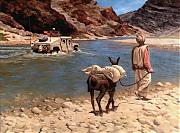The term strategy is generally applied to describe an “idea” of a direction, plan, concept, and courses of action in which to proceed. (1) Strategy is fundamentally concerned with the application of instruments or elements of power (diplomatic/political, economic, martial and informational) to achieve political objectives in cooperation or competition with other actors pursuing their own objectives.
The underlying assumption of strategy is that other competitive entities have interests that they pursue to the best of their abilities. Strategy reflects a choice, a preference for a future state or condition. In an attempt to create this condition, strategy confronts adversaries and unforeseen events beyond one’s direct control.
Strategy is about how (way or concept) available power (means or resources) is applied to achieve objectives (end) in support of interests. Experts stress that the strategist must know what is to be accomplished and that only by analyzing and understanding the internal and external environment in which he operates can the strategist develop appropriate objectives leading to the desired end-state. The theory itself highlights the requirement for strategy to ensure an appropriate balance among objectives, methods, and available resources. (The force that balances the objective, methods and available resources is an example of a Center of Gravity and reflects Chinese military thought to first “attack the strategy, then the alliance, and lastly the soldiers themselves”).
Discussion of power should not be limited to only two categories; soft and hard power. Power may also be described as potential power. The power to initiate change; applied force to drastically change the existing sociopolitical condition. Initiating fundamental changes in the present with expected benefits to be realized in the future...







Bookmarks